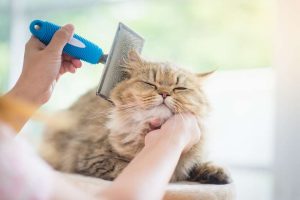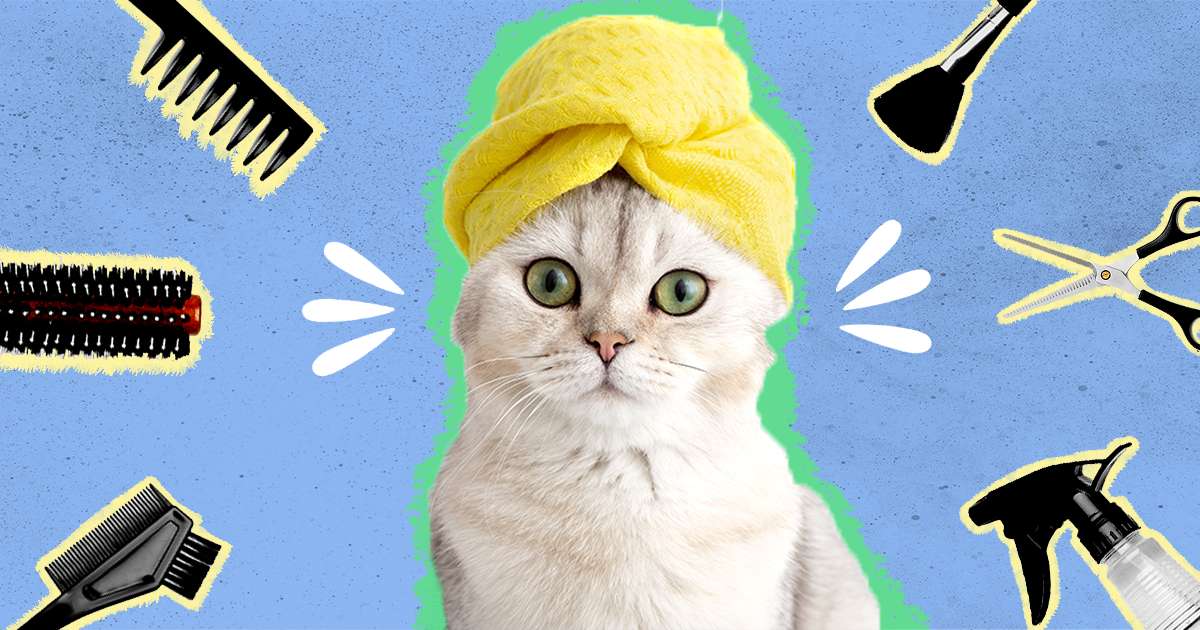groombuddies.com – When it comes to keeping your feline friend healthy and happy, grooming plays a crucial role. Whether your cat has short, long, or medium-length fur, regular grooming is not just about appearance it’s essential for their well-being. In this guide, we’ll explore essential cat grooming tips that every cat owner should know to maintain their pet’s health, coat, and comfort.
Why is Essential Cat Grooming Important?
Grooming your cat regularly isn’t just about maintaining a shiny, smooth coat. It has numerous benefits for both your cat’s physical health and emotional well-being. Here’s why you shouldn’t skip grooming sessions:
- Prevents matting and tangles: Long-haired cats are prone to mats that can be painful if left untended. Regular brushing keeps the fur tangle-free.
- Reduces shedding: Cats shed their fur naturally, but grooming can help control loose hair, reducing the amount that ends up on your furniture and clothing.
- Monitors skin health: Grooming gives you a chance to check for skin issues like dryness, irritation, or even parasites such as fleas.
- Reduces hairballs: Cats groom themselves by licking, but this can result in hairballs. Brushing helps remove excess hair before it’s ingested.
- Promotes bonding: Grooming your cat also strengthens the bond between you and your pet, providing comfort and reassurance.
Essential Cat Grooming: What You’ll Need
Before diving into the grooming process, it’s important to gather the right tools. Having the proper equipment ensures you can perform each step effectively and comfortably for both you and your cat.
- Brush or Comb: The right type of brush depends on your cat’s fur length:
- Short-haired cats: Use a fine-toothed comb or a rubber brush designed for short fur.
- Long-haired cats: A slicker brush or a pin brush works well for detangling longer hair.
- Undercoat rake: Great for cats with dense undercoats, such as Persians or Maine Coons.
- Nail Clippers: Cats’ claws grow quickly and can become painful if not trimmed. Special cat nail clippers are designed to make this process smooth and stress-free.
- Ear Cleaner: Gently clean your cat’s ears to prevent infections or wax buildup, especially for breeds prone to ear issues.
- Shampoo: If your cat needs a bath (which is rare), use a cat-specific shampoo to avoid irritating their skin.
- Toothbrush & Toothpaste: Dental hygiene is just as important for cats as it is for humans. A toothbrush designed for cats and vet-approved toothpaste will help maintain oral health.
Step-by-Step Essential Cat Grooming Tips
1. Brushing Your Cat’s Fur
Brushing is one of the most important aspects of essential cat grooming, especially for long-haired breeds. For short-haired cats, brushing once a week is usually sufficient, but long-haired cats require more frequent grooming ideally every day or every other day.
- Start Slowly: If your cat isn’t used to being brushed, take things slowly and be patient. Begin by brushing gently to avoid startling your cat.
- Use the Right Tools: Select a brush suited to your cat’s fur type. For example, a slicker brush is great for removing tangles, while a rubber brush is better for short-haired cats to help with shedding.
- Brush in the Direction of Hair Growth: Always brush in the natural direction of hair growth. This makes the process more comfortable for your cat and prevents causing pain or discomfort.
- Focus on Problem Areas: Pay special attention to areas like behind the ears, under the legs, and the belly, where mats can form more easily.
- Reward Your Cat: Grooming can be stressful for some cats. Offer them praise or treats to make the experience more enjoyable.
2. Nail Trimming
Regular nail trimming is a vital part of essential cat grooming. Overgrown nails can cause discomfort and may even get caught in fabrics or furniture.
- Use Specialized Nail Clippers: Invest in a high-quality pair of cat nail clippers. Human nail clippers are not suitable and may cause discomfort.
- Trim a Little at a Time: Be cautious not to cut too much. Only trim the sharp tip of the nail, avoiding the pink area known as the quick. Cutting into the quick can cause pain and bleeding.
- Start Early: If possible, introduce your cat to nail trimming when they’re young. This will make the process easier as they get older.
3. Ear Cleaning
Ear health is an often-overlooked aspect of essential cat grooming. Dirty or infected ears can lead to discomfort, so regular ear checks are important.
- Use a Cat-Specific Cleaner: Never use human ear cleaners, as they can be too harsh. Instead, use a gentle, vet-approved solution.
- Be Gentle: Use a cotton ball or gauze pad to gently wipe the outer ear. Avoid inserting anything into the ear canal itself to prevent injury.
- Look for Signs of Infection: If your cat’s ears are red, have a strong odor, or discharge a brownish wax, consult a veterinarian, as these could be signs of an infection.
4. Bathing Your Cat
Most cats groom themselves and don’t need regular baths. However, there are instances when a bath is necessary, such as when your cat has gotten into something sticky or smelly.
- Choose a Cat-Specific Shampoo: Use a mild shampoo designed for cats. Never use human shampoo, as it can irritate their skin.
- Prepare the Bathing Area: Fill a sink or bathtub with warm water. Make sure the area is non-slip to prevent your cat from panicking.
- Avoid Water in the Face: Be very gentle when wetting your cat’s fur. Avoid getting water in their face, as this can be a stressful experience.
- Dry Carefully: After the bath, use a soft towel to pat your cat dry. If your cat is comfortable with it, you can also use a blow dryer on a low setting.
5. Dental Care
Just like humans, cats can suffer from dental issues like gingivitis and plaque buildup. Regular tooth brushing is a key part of essential cat grooming to keep your cat’s teeth and gums healthy.
- Start Slowly: If your cat is new to brushing, introduce the process gradually. Begin by rubbing your cat’s gums with your finger before moving on to a toothbrush.
- Use Cat-Specific Toothpaste: Never use human toothpaste, as it can be toxic to cats. Choose a cat-friendly toothpaste that comes in flavors they like, such as poultry or fish.
- Aim for Regular Brushing: Try to brush your cat’s teeth at least two to three times a week. Regular brushing can help prevent the buildup of tartar and reduce the risk of gum disease.
6. Flea and Parasite Control
Keeping your cat free from fleas and other parasites is a crucial part of grooming. Fleas can lead to itching, hair loss, and even infections, while ticks and worms can pose serious health risks.
- Regular Flea Checks: Use a flea comb to check your cat’s fur for signs of fleas, especially around the neck and base of the tail.
- Preventative Treatments: Talk to your vet about flea prevention products, such as spot-on treatments, oral medications, or flea collars.
Groom Your Cat with Groom Buddies

Looking for a hassle-free way to keep your cat looking and feeling their best? At Groom Buddies, we specialize in providing expert grooming services tailored to your cat’s unique needs. Whether your feline friend requires a quick brush-out, a full bath, or nail trimming, our team of professional groomers ensures a stress-free and comfortable experience for both you and your cat.
Why not let Groom Buddies handle the grooming while you enjoy more quality time with your pet? Visit us today and discover how we can make grooming a breeze for both you and your furry companion!


